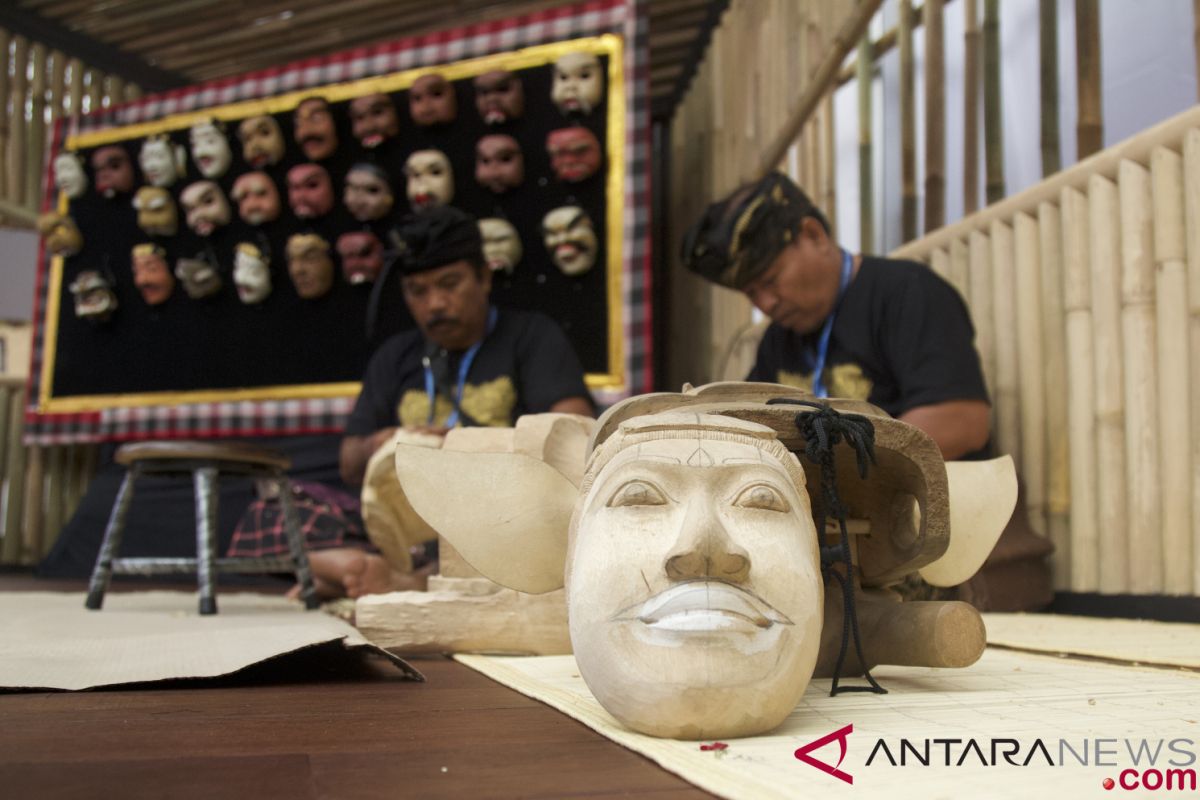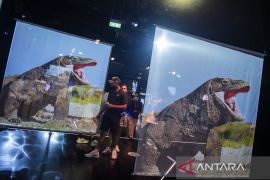"I started carving masks from the beginning of 1999. I have been learning the art of carving since I was a child," said Cokorda, while carving a Pule wood, turning it into a Barong mask in the Indonesian Pavilion in Nusa Dua, on Monday.
Cokorda stated that participating in an international-scale exhibition, such as the Indonesian Pavilion, was a rare and valuable opportunity for craftsmen and artists.
"There are many artists in Bali, but opportunities like this are rare for us. I hope by joining this exhibition, I can introduce my product to the world. It has earned its popularity, but I want it to be known for having international standards," he remarked.
His workshop in Batubulan Kangin houses seven carvers, with each artist taking about three months to finish one mask.
"It can even take six months to finish a full-bodied Barong mask. In terms of price, it is Rp13 million for the head mask. We sell the full body one for Rp150 million in the domestic market, but for export, it can go up to Rp250 million. So far, we have exported our products to the Netherlands, Belgium, and Germany," Cokorda, whose venture is a partner of Indonesia`s state-owned bank BNI, revealed.
The core material of Cokorda`s Barong mask is `pule` wood, as it is considered the lightest one and easily absorbs color.
"The hardest part is not the of carving of wood but adjusting between the upper and lower jaw and making sure that the composition of the barong eyes are symmetrical, so that it does not look like they are squinting," he added.
The Indonesian Pavilion is held in an area of around two thousand square meters, and it is an exhibition that shows the success of infrastructure development, such as highways, toll roads, airports, and seaports.
In addition, there are also illustrations of the development of telecommunications, business, and national strategic industries, such as planes, tanks, and ships that will also be displayed before thousands of International Monetary Fund (IMF) and World Bank (WB) delegates.
Various investment-supporting factors that can attract investors to invest in Indonesia, are also displayed in the booth.
Around 150 micro, small, and medium enterprises (MSMEs) from 64 sub-districts and cities in Indonesia are also involved in exhibiting their work.
The Indonesian Pavilion is exhibited during the annual meeting of the IMF and WB in Nusa Dua, Bali, from Oct 8 to 14, 2018.
It is divided into several rooms according to themes, including BUMN Hall, workshops, exhibitions, VIP area, investment area, and a coffee shop.
Reporting by Ida Nurcahyani
Reporter: Aria Cindyara
Editor: Gusti Nur Cahya Aryani
Copyright © ANTARA 2018












